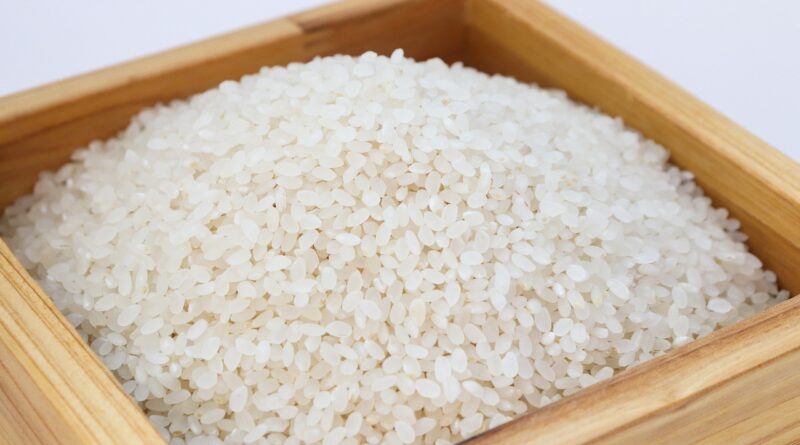Implications of Basmati rice price reduction in India’s agri-exports
By Anshul Garg
The export of Indian Basmati rice to international markets has gathered steam in the last few years. In FY 23-24, Indian Basmati rice shipments touched 5.24 million tonnes in comparison with 4.56 million tons in the previous year, registering a 15% growth. Driven by enhanced trade in the last fiscal, it generated a substantial high of $5.83 billion or INR 48,389 Crore, in contrast to $4.78 billion or INR 38,525 Crore in FY 22-23. Considering the intense competition in the Basmati export market, this achievement highlighted the growing emphasis on Indian Basmati rice across the globe, propelled by cost-effective prices and unparalleled quality.
Understanding the price dynamics of Basmati rice in export markets requires comprehensive knowledge of the ecosystem. The price dynamics depend on several factors that begin from cultivation and end at retail markets. When the cultivation process is supported appropriately by natural factors like weather, it leads to significant harvesting. This directly translates into a reduction of paddy prices, which begins a chain reaction to reduce the price of new rice that is sourced by exporters — all of whom look to adopt innovative ways to offer premium quality products at affordable prices to reduce retail prices. The subsequent retail price dynamics are impacted significantly by this competition, implications of which can be witnessed in India’s annual agri exports.
Optimising order books
When prices at the wholesale market are reduced, the following chain reaction impacts the retail market. As a result, exporters are being enabled to source Basmati rice cost-effectively, the impact of which will be highlighted at the retail prices. This will also help exporters accumulate a significant order book in strategic international markets, as buyers tend to purchase in bulk and for long-term usage when prices are affordable. This helps exporters to plan shipments accordingly.
Furthermore, this will also help Indian Basmati rice exporters to strategically plan inventory management. With substantial orders at hand, the requirement to store the product for a long time is mitigated and helps to streamline inventory and supply chain management. This also becomes a major contributing factor in reducing associated expenses. In contrast to the previous year when India recorded significant export numbers, the ongoing year’s prices may help exporters to increase the overall trade, contributing to reducing the country’s trade deficit. This remains the single most major implication of Basmati rice price reduction in India’s agri-exports.
Supportive climate
One of the major aspects of the price reduction of Basmati rice is the natural forces — appropriate rain, sunlight and overall supporting weather. If the climate during the cultivation period supports the efforts, this directly leads to favourable paddy harvesting. This reduces paddy prices in wholesale markets and the subsequent chain reaction helps to reduce prices in retail markets and vice versa. The cultivation in 2024 has been favourable to farmers and exporters, enabling the latter to source the grains at reduced rates. While this is only the beginning of the harvesting and sourcing season, further climate support will help the stakeholders to maintain a reduced rate of Basmati rice with the possibilities of further price drops. However, this is only assumptive and remains to be seen in the coming months.
International market implications
This multi-layered aspect remains a bit more complex in comparison with the other implications. In years when the price of Basmati rice is increased, it leads to an increase in retail rates. This results in the transaction of considerably more wealth in comparison with years when the cost is relatively less and vice versa. However, in the context of annual national exports, the focus must remain on volume rather than on turnover revenue, which can also be affected by the changing rates of dollars. For example, if 10 KG Basmati rice was sold for INR 10,000 in the previous year, and the same amount is sold for INR 9,800 this year — the volume remains the same, but turnover is reduced. Also, based on whether the valuation of the US Dollars increases or decreases, the resulting prices will be impacted but it will not engulf the volumes in any way.
Future scope
When the price of Basmati rice is reduced, buyers tend to accumulate high volumes for long-term usage. In context to the international markets, when buyers pre-book large volumes of Basmati rice at reduced prices, exporters continue towards planning shipping and booking containers using contemporary freight costs. While this helps exporters maintain an optimised inventory, shipping cost dynamics may lead to increased costs, resulting in trade discrepancies. Such instances require exporters and buyers to undertake in-depth discussions with a focus on reaching an amicable agreement, ensuring streamlined trade.
(Anshul Garg is the Director and CEO of Aroma AAT Basmati Rice.)
This article has been republished from The Financial Express.

